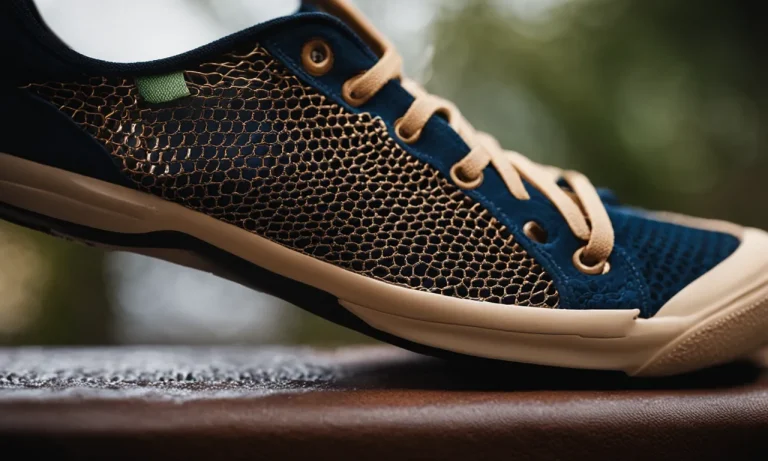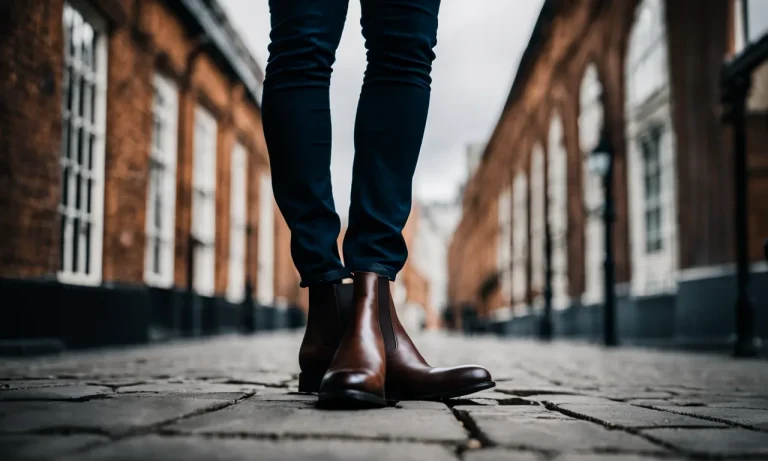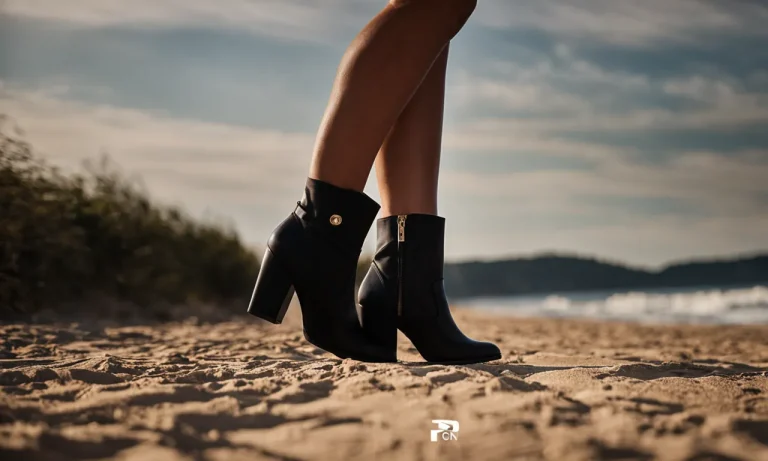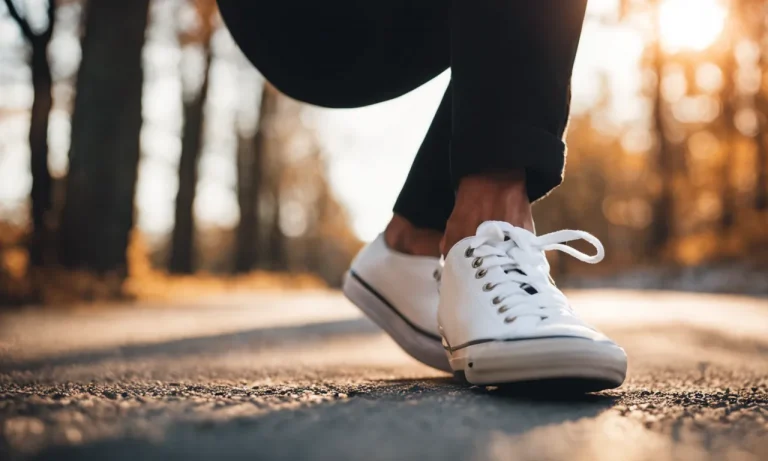Do you ever get frustrated spending time tying and re-tying your shoelaces throughout the day? If you’re looking for a quicker and easier shoe lacing solution, this article will provide a comprehensive overview of the innovative options now available for shoes with laces that don’t need tying.
If you’re short on time, here’s a quick answer to your question: There are now several types of elasticized laces, lock laces, and lace anchors that can convert traditional tied shoes into slip-on styles without needing to tie laces.
In this approximately 3000 word article, we will explore the different technologies behind no-tie laces, the benefits and potential drawbacks, how to properly install them, and provide recommendations on the best products currently on the market.
The Problem With Traditional Tied Shoelaces
Frequent retightening and retying
One of the main issues with traditional tied shoelaces is the constant need for retightening and retying. Throughout the day, shoelaces can become loose, leading to discomfort and potential tripping hazards.
This can be especially frustrating for individuals who are constantly on the move or engaged in physical activities. It not only wastes time but also poses a safety risk.
Difficulty tying for some groups
Tying shoelaces can be a challenging task for certain groups of people, including young children, individuals with mobility limitations, and those with dexterity issues. For children, learning to tie their shoelaces can be a complex motor skill, causing frustration and delaying their independence.
Similarly, individuals with mobility limitations or dexterity issues may find it physically difficult or even impossible to manipulate the laces and tie them securely.
Tripping hazards
Loose shoelaces pose a tripping hazard, not only for the person wearing them but also for those around them. Imagine walking down a busy sidewalk and suddenly tripping over someone’s untied shoelaces. It can lead to injuries for both the wearer and others.
Additionally, loose laces can get caught in various objects or machinery, further increasing the risk of accidents.
To address these issues, innovative solutions have been developed to create shoelaces that don’t need to be tied. These alternatives offer convenience, safety, and accessibility for individuals of all ages and abilities.
Types of No-Tie Shoelace Systems
Elastic Laces
Elastic laces are a popular choice for those who want a hassle-free alternative to traditional shoelaces. These laces are made from stretchable material that allows for easy slip-on and off functionality. They are designed to provide a snug fit without the need for tying or retying knots.
Elastic laces come in various colors and lengths, making them suitable for any type of shoe.
One of the advantages of elastic laces is their versatility. They can be adjusted to fit different shoe sizes and can be easily installed on a wide range of footwear, including sneakers, running shoes, and casual shoes.
The elasticity of these laces also ensures a comfortable fit, as they expand and contract with the movement of the foot.
Elastic laces are often used by athletes and individuals with physical disabilities or limited mobility. They provide convenience and ease of use, allowing users to quickly slip their shoes on and off without the need for bending down and tying knots.
Lock Laces
Lock laces are another popular option for no-tie shoelace systems. These laces feature a locking mechanism that secures the shoelaces in place once they are adjusted to the desired tightness. The lock can be easily released by pressing a button or pulling a tab, allowing for quick and easy removal of the shoes.
One of the benefits of lock laces is their ability to provide a customized fit. Users can adjust the tension of the laces to their preference, ensuring a comfortable and secure fit that doesn’t come undone during physical activity.
Lock laces are also durable and can withstand repeated use and stretching.
Lock laces are commonly used by athletes, runners, and individuals who engage in sports or outdoor activities. They offer convenience and reliability, eliminating the need to constantly retie shoelaces during intense workouts or competitions.
Lace Anchors
Lace anchors are a unique and innovative solution for keeping shoelaces securely in place. These small devices are attached to the inside of the shoe and act as anchors for the laces. They prevent the laces from coming undone and eliminate the need for tying knots.
The installation of lace anchors is simple and straightforward. They can be easily attached to any type of shoe using adhesive or by threading the laces through the anchor loops. Once in place, the laces can be adjusted to the desired tightness and secured with the lace anchors.
Lace anchors offer a permanent solution for those who prefer the look of traditional shoelaces but want the convenience of a no-tie system. They are suitable for a wide range of footwear, including dress shoes, boots, and sneakers.
Each of these no-tie shoelace systems provides a convenient and efficient alternative to traditional shoelaces. Whether you’re an athlete looking for quick and easy footwear adjustments or someone with limited mobility seeking independence, these systems offer a practical solution.
Explore the options available and find the perfect fit for your lifestyle!
Benefits of No-Tie Shoelaces
Convenience and speed
No-tie shoelaces offer the convenience of not having to tie and untie your shoes every time you put them on or take them off. This saves you valuable time, especially when you’re in a hurry. With no-tie shoelaces, you can simply slip your shoes on and off effortlessly.
Whether you’re running late for work or trying to catch a flight, these laces will make your life easier and more efficient.
Prevent tripping
Traditional shoelaces can come undone, causing you to trip or stumble. This can be especially dangerous for athletes and individuals who engage in physical activities. No-tie shoelaces eliminate the risk of tripping by keeping your shoes securely fastened throughout the day.
So you can focus on your activities without worrying about your laces coming undone.
Good for kids, elderly, disabled
No-tie shoelaces are a game-changer for children, the elderly, and individuals with disabilities. For kids who are still learning to tie their own shoelaces, these laces provide an alternative that allows them to be independent and self-sufficient.
Similarly, the elderly and individuals with limited mobility can benefit from the ease of use that no-tie shoelaces offer. It promotes their independence and reduces the risk of accidents due to tripping.
More consistent tightness
With traditional shoelaces, it can be challenging to achieve consistent tightness on both shoes. One shoe may end up being tighter than the other, causing discomfort and uneven support. No-tie shoelaces provide a consistent and even tightness, ensuring a comfortable fit for both feet.
This can enhance your overall comfort and prevent foot-related issues caused by unevenly tightened laces.
Customizable tightness
No-tie shoelaces allow you to customize the tightness of your shoes to suit your preferences. Whether you prefer a snug fit for running or a looser fit for casual wear, you can easily adjust the tension of the laces. This level of customization ensures maximum comfort and support for your feet.
Potential Drawbacks to Consider
Less durable than tied laces
While shoe laces that don’t need to be tied offer convenience and ease of use, they may not be as durable as traditional tied laces. Over time, the constant pulling and stretching of the elastic material used in these laces can cause them to weaken or lose their elasticity.
This can lead to breakage or the need for replacement sooner than with regular laces. It’s important to consider the longevity of these laces and whether they will hold up to regular wear and tear.
Can loosen throughout the day
One potential drawback of shoe laces that don’t need to be tied is that they can loosen throughout the day. The lack of a secure knot means that the laces may gradually loosen as you walk or engage in physical activity.
This can be frustrating for those who prefer their shoes to remain snugly fastened. However, some brands have developed innovative designs that minimize loosening, so it’s worth researching different options to find the most reliable ones.
Limited style options
When it comes to shoe laces that don’t need to be tied, there may be limited style options available compared to traditional laces. Traditional laces come in a wide variety of colors, patterns, and materials, allowing individuals to customize their shoes to suit their personal style.
However, with non-tie laces, the selection may be more limited, especially if you are looking for a specific aesthetic. It’s important to consider whether the available styles align with your preferences before making a decision.
Higher cost
Shoe laces that don’t need to be tied often come with a higher price tag compared to regular laces. The advanced technology and materials used in these laces can contribute to their higher cost. While the convenience and time-saving aspect may justify the price for some, it’s important to weigh the benefits against the added expense.
Additionally, it’s worth noting that regular laces are widely available and can be easily replaced at a lower cost if needed.
How To Install No-Tie Shoelaces
Measure your laces
Before installing no-tie shoelaces, it is important to measure your existing laces. This will help ensure that you choose the correct length of no-tie laces for your shoes. To measure your laces, simply remove them from your shoes and lay them flat on a surface.
Use a ruler or measuring tape to determine the length of the laces.
Follow package instructions
Once you have chosen the right length of no-tie laces, carefully read the instructions provided in the package. Different brands may have slightly different installation methods, so it is important to follow the specific instructions for the laces you have purchased.
In general, the installation process involves threading the laces through the eyelets of your shoes and then securing them with the provided locking mechanism.
Tips and tricks
Here are some tips and tricks to make the installation of no-tie laces even easier:
- Start from the bottom: Begin threading the laces through the bottom eyelets of your shoes and work your way up. This will ensure a secure and tight fit.
- Adjust the tension: Experiment with the tension of the laces to find the perfect fit for your comfort. Too tight may cause discomfort, while too loose may lead to your shoes slipping off.
- Trim excess lace: If the no-tie laces are too long for your shoes, you can trim the excess length. Be careful not to cut them too short, as you might need the extra length for future adjustments.
- Practice makes perfect: It may take a few tries to get the hang of installing no-tie laces, especially if you are new to them. Don’t get discouraged if it takes a bit of practice to master the technique.
For more detailed guidance, you can also visit Shoelaces Express or Ian’s Shoelace Site, where you can find step-by-step instructions and visual demonstrations.
Reviews of the Best No-Tie Shoelace Products
Xpand no-tie shoelaces
The Xpand no-tie shoelaces are designed to provide convenience and comfort to shoe-wearers of all ages. These laces are made from high-quality elastic material that stretches to accommodate different foot sizes and shapes. They are easy to install and can be adjusted to provide the perfect fit.
Xpand no-tie shoelaces come in a variety of colors, allowing users to customize their shoes to match their personal style. The laces are durable and long-lasting, ensuring that they will hold up under everyday wear and tear.
Lock Laces elastic laces
Lock Laces elastic laces are another popular choice for those looking for a hassle-free shoelace solution. These laces feature a unique locking system that allows users to easily adjust the tension and fit of their shoes.
The laces are made from a stretchy, durable material that is designed to withstand the rigors of daily wear. Lock Laces elastic laces come in a range of colors and lengths, making them suitable for all types of shoes and users.
Hickies elastic lacing system
The Hickies elastic lacing system is a revolutionary shoelace alternative that offers both convenience and style. These laces are made from a flexible material that allows for easy installation and adjustment.
The unique design of the Hickies lacing system ensures that shoes stay securely in place, providing a comfortable fit throughout the day. With a wide range of colors and patterns available, users can customize their shoes to reflect their individuality.
Bungee laces
Bungee laces are a popular choice for athletes and outdoor enthusiasts. These laces are made from a stretchy bungee cord material that provides a secure fit while allowing for flexibility and movement.
Bungee laces are easy to install and adjust, making them ideal for those who need to quickly put on or take off their shoes. Whether you’re running a marathon or hiking a trail, bungee laces will keep your shoes snug and comfortable.
Kwik Laces
Kwik Laces are known for their innovative design and ease of use. These laces feature a unique locking mechanism that allows users to quickly and securely tighten their shoes. Kwik Laces are made from a durable elastic material that is designed to withstand the demands of athletic activities.
With a wide range of colors and sizes available, Kwik Laces are suitable for athletes of all ages and skill levels.
Other top brands
In addition to the aforementioned brands, there are several other no-tie shoelace options available on the market. Some of these include Elastic No Tie Shoelaces, Udaily elastic shoelaces, and Lock Laces Reflective.
Each brand offers its own unique features and benefits, allowing users to find the perfect no-tie shoelace solution for their needs.
When it comes to choosing the best no-tie shoelace product, it ultimately comes down to personal preference and needs. Whether you’re looking for convenience, style, or performance, there is a no-tie shoelace option out there for you.
So say goodbye to traditional shoelaces and embrace the ease and comfort of no-tie laces!
Conclusion
If you are tired of dealing with the hassle and nuisance of perpetually untied shoelaces, the innovative no-tie products reviewed in this article provide convenient alternatives for converting your shoes.
By eliminating the need to tie while still allowing you to customize the fit, elastic and lock laces enable you to simply slip on your shoes and go. With benefits like increased safety, comfort, and accessibility, no-tie shoelaces are an easy way to simplify your on-the-go life.






